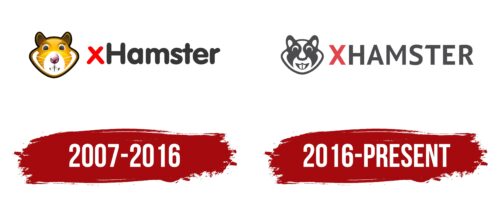The choice of a hamster for the xHamster logo underscores the company’s strategic vision and creativity in the adult entertainment industry. This decision symbolizes the ambition for differentiation and creating a strong brand identity in a competitive market.
xHamster: Brand overview
Established in 2007 by Oleg Netepenko and Dmitri Gussew, xHamster quickly rose to prominence as a leading platform for sharing adult videos online. Hailing from Limassol, Cyprus, the founders envisioned xHamster as a hub for amateur video contributions.
The website’s popularity surged as the years passed, largely due to its collection of user-shared homemade content. By the end of 2009, it had earned its place among the top 100 most frequented sites globally. A defining characteristic of xHamster was its commitment to enhancing user experience. This led to features such as detailed tagging systems, profiles for adult performers, and interactive options like live cams and integrated shopping.
In a decisive move in 2012, when major credit card firms halted transactions for adult platforms, xHamster responded with a new section named “The Fappening.” This area showcased leaked celebrity content, a decision that, while contentious, undeniably fueled the platform’s traffic.
By the time 2014 rolled around, xHamster was boasting significant metrics: an impressive 450 million annual visitors and an annual video view count in the ballpark of 20 billion. Their extensive content library was further augmented through collaborations with prominent adult film studios. As it stands, the platform’s video catalog contains more than 10 million entries. Pushing boundaries, xHamster delves into novel endeavors such as VR experiences and narrative-driven content.
Nevertheless, the site’s journey hasn’t been without bumps. Debates over illicit content and moderation standards have occasionally cast shadows over its achievements. Yet, due to its unparalleled brand visibility and extensive community, xHamster endures as a significant player in the online adult industry.
Meaning and History
The decision by xHamster to adopt a hamster as its mascot offers a fascinating glimpse into the brand’s strategic thinking and creative process. In an industry like adult entertainment, where differentiation and brand personality play crucial roles in attracting and retaining users, the choice of a mascot can significantly influence public perception and brand identity. The company’s deliberate selection process underscores its commitment to innovation, user engagement, and variety of adult content.
Choosing an animal mascot that embodies qualities such as being “funny, friendly, and catchy” was essential to xHamster’s strategy to stand out in the competitive digital content landscape. The initial shortlist included a mole, a fox, and a frog, each with a unique appeal. While Fox presented a strong candidate due to its association with being “foxy” and its potential for clear brand recognition—similar to Mozilla Firefox’s success—the team ultimately decided on the hamster for several compelling reasons.
The hamster offered a less obvious choice than the more conventional fox, allowing xHamster to carve out a distinctive niche in the adult entertainment industry. Described as “hilarious and adorable,” “cute, fluffy,” and embodying traits such as a passion for collecting and high sexual energy, the hamster resonated with the brand’s desired attributes. Furthermore, hamsters being “exceptionally pleasant to touch” added an appealing tactile dimension to the mascot, enhancing its relatability.
This unconventional choice reflects xHamster’s broader approach to its business: prioritizing user experience, safety, and a diverse content library. By adopting a mascot that breaks traditional expectations, xHamster captures attention and fosters a unique brand identity that can engage users on multiple levels.
2007 – 2016
The original xHamster logo presented a distinctive and engaging visual identity through its dual-element design. A hamster’s muzzle was intricately depicted on the left side of the logo, utilizing a palette of several shades of yellow and brown to capture the warmth and liveliness of the brand’s mascot. This choice of colors, complemented by touches of white and black nuances, added depth and realism to the hamster’s portrayal, making it instantly recognizable and memorable to the audience.
Adjacent to the hamster’s image, on the right side, was the name of the website, executed in a clear and straightforward typeface. A striking use of color characterized the wordmark: the initial letter was boldly rendered in red, standing out against the other letters presented in black. This contrast drew attention to the logo and provided a visual anchor, harmonizing the logo’s graphical and textual components. A red initial letter in the wordmark was a focal point, guiding the viewer’s gaze and reinforcing the brand’s identity.
2016 – today
The evolution of the xHamster logo reflects a significant shift towards minimalism and enhanced expressiveness, both in its color palette and design elements. The transition to a simpler color scheme—exclusively using black, white, and red—marks a deliberate move toward clarity and impact. This pared-down approach allows for a more striking presentation, where the colors not only define the logo’s visual identity but also amplify its symbolic meanings: black for sophistication, white for purity and simplicity, and red for passion and energy.
Modifying the hamster’s muzzle in the new logo is particularly noteworthy. The teeth, previously prominent, have been accentuated even further, contributing to the hamster’s distinctively mischievous expression. The adjustments to the eyes and corners of the mouth, crafted to suggest a smile, imbue the mascot with a playful and engaging personality. This stark contrast to the original logo, where the hamster’s expression was more neutral, injects a sense of character and liveliness into the brand’s visual representation.
The wordmark has undergone significant improvements for better legibility and brand recognition. The shift to all capitalized letters and a simplified typeface enhances readability and conveys a stronger, more unified brand voice. These changes modernize the logo and reinforce the brand’s identity in a crowded marketplace.
Alexander Hawkins, the Chief Marketing Officer, describes the new logo as “simple but sexy,” a characterization that captures the essence of the redesign. As per Hawkins, the motivation behind the update stems from a desire “to become even better,” indicating a forward-looking approach to brand evolution. This strategic refresh is about aesthetic enhancement, strengthening the brand’s connection with its audience, and positioning itself for future growth. The new xHamster logo exemplifies how thoughtful design can encapsulate a brand’s ambition and ethos, making it more relatable and appealing to consumers.
Font and Colors
The evolution of the xHamster logo’s typeface and color palette signifies a strategic refinement in the brand’s visual identity, aiming to align more closely with contemporary design trends and improve user interaction. The transition from plump, rounded glyphs to a more angular and neutral typeface reflects a deliberate shift towards enhancing legibility and adopting a more modern aesthetic. While the original typeface’s friendlier and more inviting appearance contributed to the brand’s approachable image, the current angular design addresses practical considerations such as readability across various digital platforms and devices. This change suggests an effort to balance emotional appeal with functional design priorities.
The transition to a more contrast-rich palette, especially the use of black and white for the hamster motif, marks a significant improvement in making the logo stand out as a distinct emblem rather than a detailed illustration. This choice enhances the logo’s visibility and memorability, crucial qualities for a brand operating in the highly competitive adult entertainment industry. The decision to retain the red “X” serves as a clever nod to the brand’s heritage, ensuring continuity and recognition among the existing user base. This element acts as a visual bridge between the old and new logos, maintaining a connection to the brand’s origins while embracing a fresher, more contemporary look.







